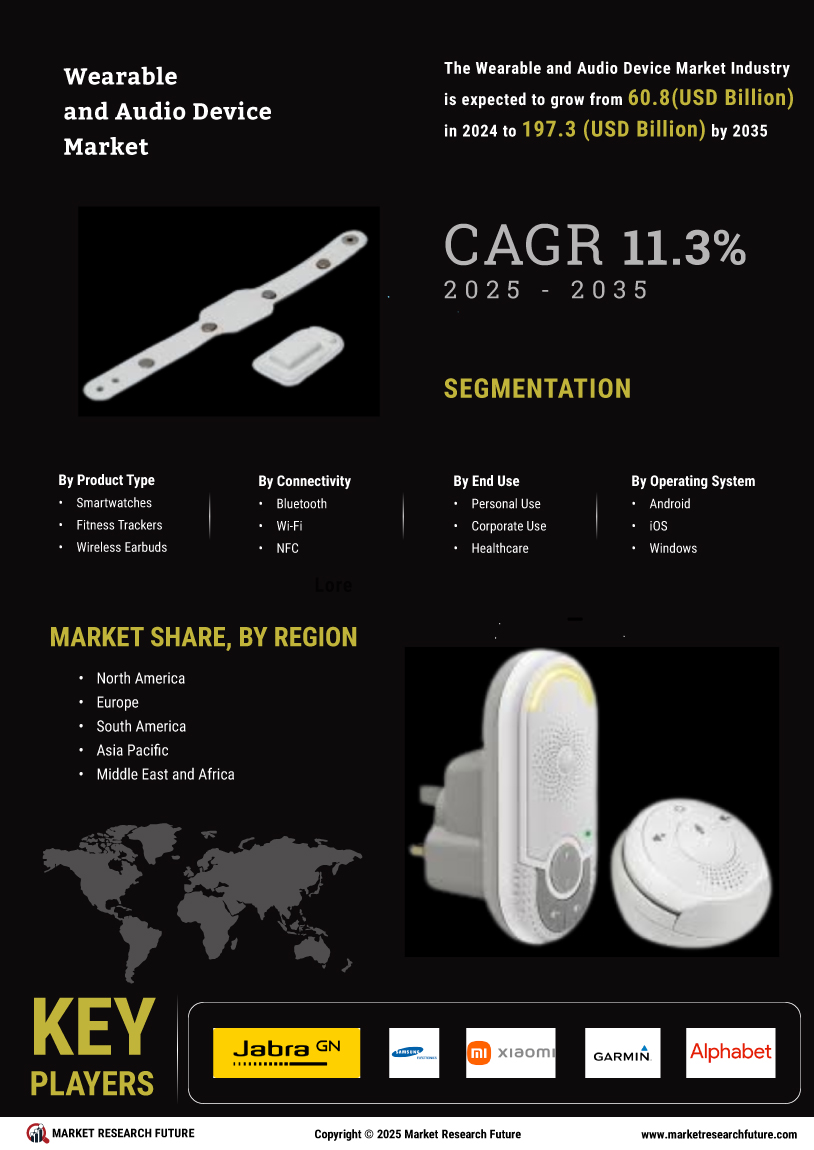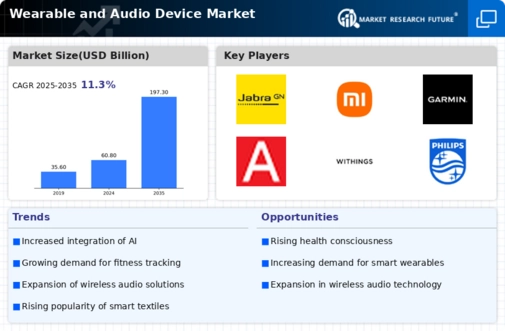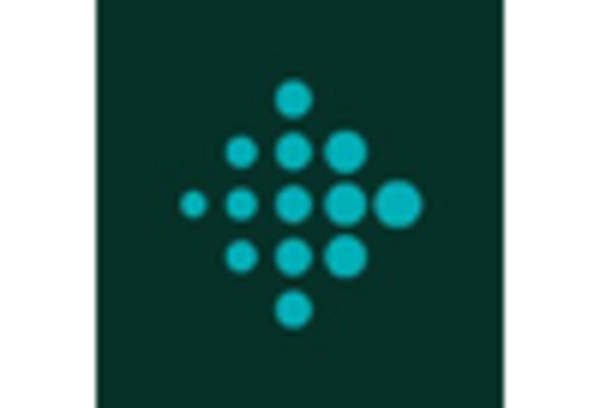Rising Health Awareness
An increasing awareness of health and wellness is significantly influencing the Wearable and Audio Device Market. Consumers are becoming more proactive about their health, leading to a surge in demand for devices that monitor fitness levels, heart rates, and sleep patterns. This trend is reflected in the growing popularity of fitness trackers and smartwatches, which are expected to dominate the market. Data suggests that the health and fitness segment of the wearable market is anticipated to grow at a compound annual growth rate of over 20% in the coming years. As individuals seek to lead healthier lifestyles, the integration of health-focused features in audio devices, such as guided workouts and health tracking, is likely to become a standard expectation.
Technological Advancements
The Wearable and Audio Device Market is experiencing rapid technological advancements that are reshaping consumer expectations and product capabilities. Innovations such as artificial intelligence, machine learning, and advanced sensors are being integrated into wearable devices, enhancing their functionality. For instance, smartwatches now offer features like ECG monitoring and blood oxygen level tracking, which were not available a few years ago. According to recent data, the market for smart wearables is projected to reach approximately 100 billion dollars by 2026, indicating a robust growth trajectory. These advancements not only improve user experience but also drive demand for more sophisticated audio devices that can seamlessly integrate with wearables, creating a cohesive ecosystem for consumers.
Integration of Smart Home Technology
The convergence of wearable technology with smart home systems is emerging as a pivotal driver in the Wearable and Audio Device Market. As smart home devices become more prevalent, consumers are increasingly looking for wearables that can seamlessly interact with their home environments. This integration allows users to control home appliances, monitor security systems, and manage energy consumption directly from their wearable devices. Data indicates that the smart home market is expected to grow significantly, with projections suggesting it could reach over 200 billion dollars by 2026. This synergy between wearables and smart home technology not only enhances convenience but also positions audio devices as essential components of a connected lifestyle.
Growing Demand for Wireless Audio Solutions
The shift towards wireless audio solutions is a prominent trend within the Wearable and Audio Device Market. As consumers prioritize convenience and mobility, the demand for wireless headphones and earbuds has surged. This trend is supported by advancements in Bluetooth technology, which have improved connectivity and sound quality. Recent statistics reveal that the wireless audio segment is projected to account for over 50% of the audio device market by 2025. This growing preference for wireless solutions is likely to drive innovation in audio devices, encouraging manufacturers to develop products that not only deliver superior sound quality but also integrate seamlessly with wearable technology, enhancing the overall user experience.
Increased Consumer Demand for Personalization
The Wearable and Audio Device Market is witnessing a shift towards personalization, as consumers increasingly seek products that cater to their individual preferences and lifestyles. This demand for tailored experiences is prompting manufacturers to develop customizable features in both wearables and audio devices. For example, users can now select specific functionalities, colors, and designs that resonate with their personal style. Market Research Future indicates that nearly 70% of consumers are more likely to purchase a device that offers personalized options. This trend not only enhances user satisfaction but also fosters brand loyalty, as consumers feel a stronger connection to products that reflect their unique identities.


















Leave a Comment